What's New
Displaying results 1521 - 1530 of 4924
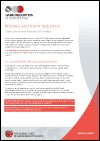
Resource | Fact Sheets,
Women are estimated to account for one third of the 275 million people who use drugs globally. Women who use drugs are consistently reported to have less access to harm reduction services and to be at higher risk of HIV and hepatitis C infection than men who use drugs. Despite these reports, robust data on this subject is scarce, and research on drug use and related health issues rarely produces information about women.
The Global State of Harm Reduction 2018 identifies a number of key issues and themes reflected across the world that limit women’s access to harm reduction services, and highlights cases of good practice.
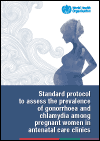
Resource | Publications,
This document has been designed to provide a framework to support local and national STI prevalence studies. The aim of these studies is to understand the burden of disease of Neisseria gonorrhoeae (NG) and Chlamydia trachomatis (CT), two priority STIs that can cause adverse birth outcomes. For this, the objective is to epidemiologically describe the prevalence of these two infections among pregnant women and, by proxy, the general population in the country.
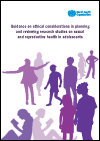
Resource | Guidelines,
This document is intended to address commonly occurring situations and challenges that one faces in carrying out research with adolescents (people aged 10–19 years), the majority of whom are deemed not to have reached the recognized age of majority in their respective settings. To this end, adolescents aged 18 and 19 years are classified as adults in many settings and have the legal capacity to make autonomous decisions regarding their participation in research. In this document, the term “children” refers to people below the age of 18 years, and the term “minor adolescents” refers specifically to people aged 10–18 years.
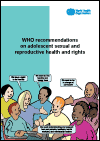
Resource | Publications,
This document provides an overview of sexual and reproductive health and rights issues that may be important for the human rights, health and well-being of adolescents (aged 10–19 years) and the relevant World Health Organization (WHO) guidelines on how to address them in an easily accessible, user-friendly format. The document serves as a gateway to the rich body of WHO guidelines, and as a handy resource to inform advocacy, policy and programme/project design and research. It aims to support the implementation of the Global Strategy for Women’s, Children’s and Adolescents’ Health 2016–2030 (1), and is aligned with the WHO Global Accelerated Action for the Health of Adolescents (AA-HA!) as well as the WHO Operational Framework on Sexual Health and Its Linkages to Reproductive Health (2,3).
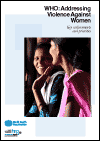
Resource | Publications,
1 in 3 women will experience physical and/or sexual violence in their lifetime, mostly by an intimate partner. This violence has a profound impact on the health of women and their families. WHO brings attention to this important public health issue through research and evidence building, development of guidelines and tools for the health sector, strengthening country capacity, and advocacy to increase political will. Here are some of WHO’s key achievements and priorities in the coming years to address violence against women.
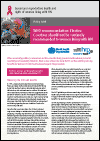
Resource | Fact Sheets,
When medically justified, a caesarean section can effectively prevent maternal and perinatal mortality and morbidity. However, there is no evidence to show that C-section delivery has any benefits for women or infants who do not require the procedure.
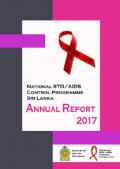
Resource | Publications,
The National STD/AIDS Control Programme (NSACP) of the Ministry of Health, is the main government organization responsible for planning and implementation of the national response to HIV/AIDS in Sri Lanka in collaboration with all stakeholders.
This volume of NSACP annual report summarizes the activities conducted by the NSACP during 2017 and presents the strategic information on STI and HIV collected from all the peripheral STD clinics and ART centers situated island-wide. It is noted with satisfaction that over the years the annual report of NSACP has become a reliable reference document on HIV and STI situation in the country to both the public and the research community.
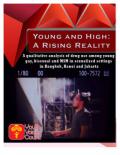
Resource | Publications,
The purpose of this study was to collect data on the “high-fun” realities of young gay, bisexual men and other young men who have sex with men in three major cities in the region; Bangkok, Hanoi and Jakarta. The cities were selected depending on available data on drug use.
This is a qualitative study undertaken by Youth Voices Count as a regional network and serves the purpose of collection of data to inform future interventions and advocacy of YVC on and for young gay, bisexual men and other young men who have sex with men who use drugs in sexualized settings. This study is by no means a scientific study of this phenomenon.
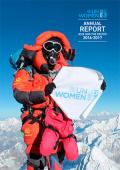
Resource | Publications,
The region’s vibrant economies and societies have produced historic advances in human well-being. Women have been central to these advances, as leaders of communities and countries, as workers and innovators, as advocates for peace and security.
In 2016 and 2017, as this report amply demonstrates, UN Women played an instrumental part in mobilizing people to step up efforts to achieve gender equality and contribute to other Sustainable Development Goals (SDGs) by the 2030 deadline. Our efforts gave women more voice, more choice, and greater safety; they included women most marginalized in their societies.
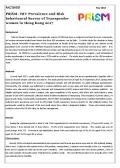
Resource | Fact Sheets,
Male-to-female transgender or transgender women (TGW) has been a neglected and hard-to-reach community, yet various overseas studies have shown that their HIV prevalence can be high. To better study the situation in Hong Kong, Special Preventive Programme of the Department of Health (DH) has included TGW as one distinct at-risk population to be covered in the HIV/AIDS Response Indicator Survey (HARiS, a venue-base survey) since 2014. It is the first time DH included TGW in PRiSM (HIV prevention and risk behavioural survey of men who have sex with men in Hong Kong). As PRiSM is a community-based survey and the participants only need to complete a self-administered online questionnaire, it was hoped that more TGW could be reached. The study aims to update on the HIV prevalence among TGW in Hong Kong, and inform on HIV/STIs preventive interventions and the profile of risk behaviours of local TGW.





